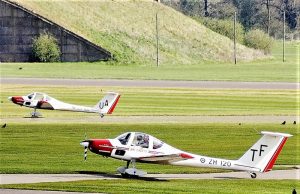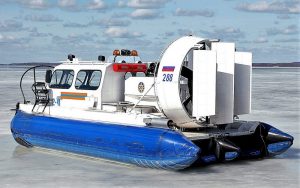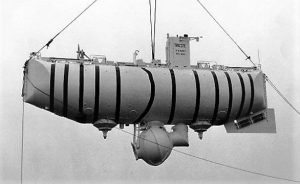Aerodrome
Aerodrome are actually very similar to airports, as both have runways and different equipment for landing aircraft. They are, in short, lands that have been destined to build facilities for an aircraft to be able to take off or land. They can be private, which are fully regulated by the authorities that control the airspace to operate, or they can be sporting, which are the aerodromes that are intended for the development of purely sporting and exhibition flights, which are of short duration. These usually have a single runway and a series of hangars to store acrobatic aircraft, gliders or balloons. A last type of aerodrome is the military, which are found as its name indicates, in military bases of the armed forces.

Related topics
Airplane, small plane
What is an aerodrome?
An aerodrome is a Greek concept that is used to refer to the flat surface on which one or more airstrips are located with the necessary equipment to land and to be able to take off aircraft, for commercial or entertainment purposes.
What is an aerodrome for?
The airfields function as:
- Military bases to store the airplanes used for that purpose.
- To protect and store the airplanes that are used in different sports exhibitions.
- For small commercial cargo.
- In private aviation.
- Flights that function as air taxis.
Characteristics of the aerodrome
The main characteristics that distinguish an aerodrome are the following:
- Each aerodrome has a reference point located at the center of the initial geometry.
- The information provided at the aerodromes is given in degrees, minutes and seconds.
- The runway must be oriented in the direction of the prevailing wind.
- All runways must be free of obstacles and outside populated areas.
- Weather conditions at airfields must be determined.
- It is important to carry out studies of visibility, wind, clouds and the frequency with which meteorological phenomena occur in the area.
- It should not be adjacent to any type of construction.
- The length of the track is considered depending on elevation, temperature, humidity and surface.
- The length of the runway, of the stop zone and of the obstacle-free zone must be determined according to the take-off performance of the aircraft.
History
The different air traffic control services arose at the same time as commercial aviation was born, this happened in the first decade of the twentieth century. Once the airfields were put into operation, it became a necessity for someone to begin informing pilots of runway conditions, wind direction and the existence of other aircraft or vehicles in the area by means of flags, beams of light or radio. The Croydon airfield, located south of London, was the first aerodrome in the world to use an air traffic control service. In the early 1920s, it was known that commercial aviation was going to be a total success and that, as soon as possible, the administration had to establish a set of rules to regulate the activity. This issue was of vital importance especially in the European continent, where the variety of borders and languages was going to make it very difficult for all the people who flew to follow and obey these rules. For this task, and under the protection of the Treaty of Versailles, the CINA or International Air Navigation Conference was born, which created, in 1919, the first General Rules of Air Traffic. On April 7, 1922, the first air collision between two commercial flights occurred over France. This made it necessary to define the first air routes in the English Channel, the need to carry radio equipment on board and the exchange of meteorological information between aerodromes.
Difference between aerodrome and airport
To understand the definition of an aerodrome, it is very important to make the difference between the term and the word airport. This is because the words are often confused as if they both had the same meaning, but in reality, they are not. The airport itself is an aerodrome that has a number of facilities permanently located and dedicated solely to commercial air transport. Aerodromes are terrains on which different runways have been built for the take-off and landing of airplanes, without engaging in commerce. However, the main difference between the two terms lies in the different standards established by the international aviation organizations and the respective aeronautical codes of each country. Therefore, an aerodrome is understood as a defined area of land or water destined for the total or partial departure, arrival and movement of aircraft. On the contrary, an airport is a facility that has permanent facilities for commercial air transport of an international nature, in other words, it has customs, migration and health control services.
Examples of aerodromes
- Copán Aerodrome in Honduras
- Aerodrome di partenza in Italy
- Aerodrome of the Province of Teruel, Spain
- The Oteros Aerodrome – Rogelio Fernández
How to cite this article?
Briceño V., Gabriela. (2019). Aerodrome. Recovered on 23 February, 2024, de Euston96: https://www.euston96.com/en/aerodrome/









